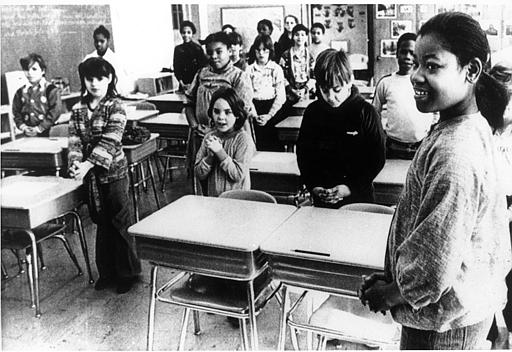The nonpreferentialist test for interpreting and applying the establishment clause of the First Amendment comes close to accommodation and “positive neutrality.” It probably lies farthest from interpretations based on strict separation of church and state, or on Thomas Jefferson’s “wall of separation” between church and state.
The nonpreferentialist position may have been best articulated by Justice William H. Rehnquist in his dissent in Wallace v. Jaffree (1985). In this case, the Supreme Court majority rejected an Alabama law that allowed teachers to tell students that they could pray during classroom moments of silence. Rehnquist argued that the Court had taken a wrong turn in its decision in Everson v. Board of Education (1947) by advocating strict separation of church and state.
According to Rehnquist, the establishment clause had two central purposes: preventing the establishment of a single national religion and preventing favoritism of one religion over another. He did not, however, think the provision was designed to prevent government from favoring religion over nonreligion. He would, therefore, deny that all government actions had to follow the first two prongs of the test established in Lemon v. Kurtzman (1971) — the Lemon test specified that such laws must have a clear secular legislative purpose, or they must have a primary effect that neither advances nor inhibits religion — as long as the government’s actions advanced religion in general rather than a specific denomination in particular. Rehnquist would allow most government pronouncements and actions (often referred to as civil religion) that generally acknowledged God.
Nonpreferentialists emphasize the free exercise clause
In interpreting the religion clauses of the First Amendment, nonpreferentialists emphasize the preeminence of the free exercise clause in securing religious liberty over the establishment clause. They believe that many strict separationists end up expressing hostility to religion, whereas even advocates of neutrality end up undermining the essential role that religion has played historically in the United States. In law professor Patrick M. Garry’s formulation of nonpreferentialism, it would permit “all nonpreferential accommodations [of religion], whether mandatory or voluntary . . . unless they have a coercive effect on someone else’s religion” (Garry 2005: 40). Garry argues that “under the spirit of the First Amendment, it is better to favor all religions than to risk discrimination against one or more religions or risk eliminating a religious presence from the nation’s public life altogether” (p. 52).

